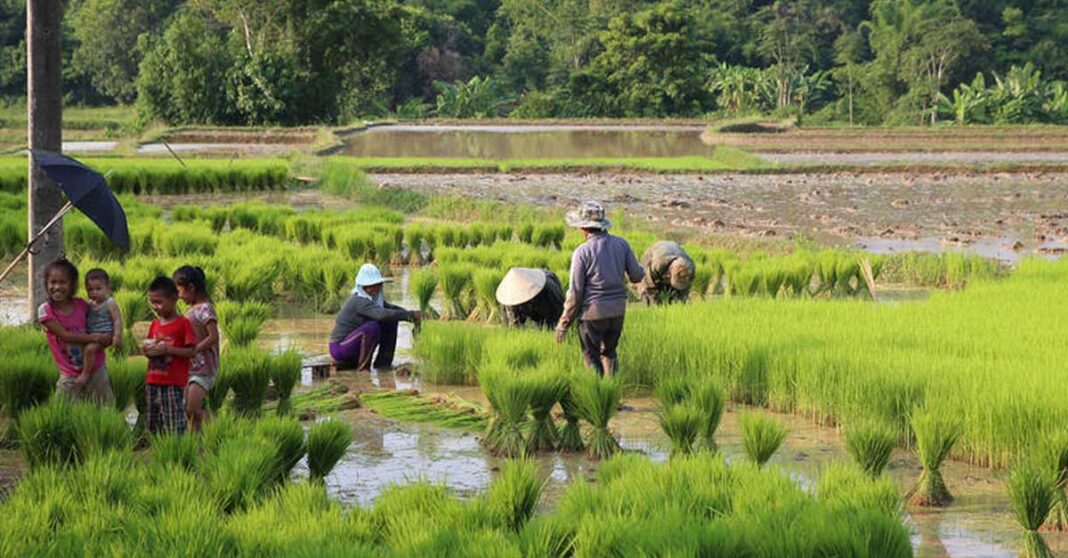Agriculture in Laos has been steadily growing over the past five years, ensuring high food security, reducing the need for imports, and boosting exports, said Deputy Prime Minister Saleumxay Kommasith on 12 November.
At the 10th Ordinary Session of the 9th National Assembly, Saleumxay reported that the country has produced an average of 6.75 million tons of food per year, achieving 96 percent of its target, aligning with the National Agenda on Solving Economic and Financial Difficulties for the 5-Year Period (2021–2025).
Food Security, Agricultural Output
The Deputy PM also emphasized that the government has prioritized agricultural production to meet domestic consumption while cutting reliance on imports. Rice, meat, fish, and eggs have been produced in sufficient quantities to meet local demand.
Government data over the past five years showed that rice production totaled 18.91 million tons, averaging 3.77 million tons per year, fully meeting the national plan of 3.5-4 million tons per year and marking an 8 percent increase from 2020 levels.
Production of food crops also exceeded expectations, averaging 2.41 million tons per year, or 13 percent above the planned 2.12 million tons.
This includes 165,389 tons of sweet corn, 242,864 tons of cassava, 1.45 million tons of vegetables, and 451,139 tons of fruits.
Livestock and fisheries recorded consistent growth, expanding by 4 percent and 4.2 percent annually, respectively, in line with national targets.
In the first nine months of 2025 alone, Laos produced 570,000 tons of meat, eggs, and fish, 98.8 percent of the planned 577,000 tons, ensuring stable domestic supply.
Saleumxay noted that the government has also adjusted plant and animal breeding programs to reduce imports, establishing clear lists of prohibited plant varieties and agricultural products that still require importation to strengthen the domestic supply chain.
Rising Export Value, Strong Growth in Agricultural Inputs
Production of animal feed, supported by 11 factories nationwide, is expected to rise from covering 68 percent of domestic demand in 2023 to 77 percent by 2025, surpassing the parliamentary resolution target of 70 percent.
Fertilizer production is projected to reach 1 million tons in 2025, covering around half of domestic demand, in line with national goals.
Saleumxay highlighted that agricultural exports have seen significant growth, with the total export value over the five-year period reaching USD 7.89 billion, averaging USD 1.58 billion annually, 31.49 percent higher than the planned USD 1.2 billion.
Plant-based exports contributed USD 5.19 billion, while animal products earned USD 477 million. Exports of wood, rubber, and non-timber forest products totaled USD 2.22 billion. Major commodities include rubber, cassava, bananas, coffee, and corn.
Progress in Land Registration
In addition to agricultural achievements, the government has accelerated efforts in land management and registration.
Between 2021 and October 2025, authorities registered 740,198 land plots, equivalent to 46 percent of the national target of 1.6 million plots. For the first ten months of 2025, 139,057 land titles were issued, meeting 46.35 percent of the annual plan.
Saleumxay emphasized that the government is working to modernize land administration through digital data scanning and pilot programs linking the land registration system with the Ministry of Finance’s revenue collection database.
Deputy Prime Minister Saleumxay concluded that these initiatives mark significant steps toward greater self-sufficiency, economic resilience, and sustainable agricultural development in Laos.



